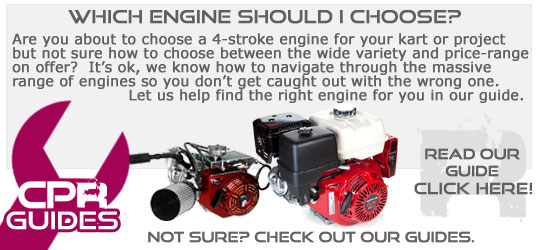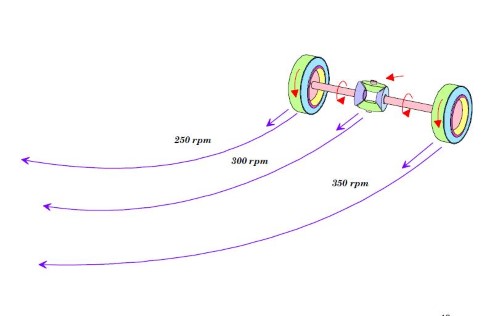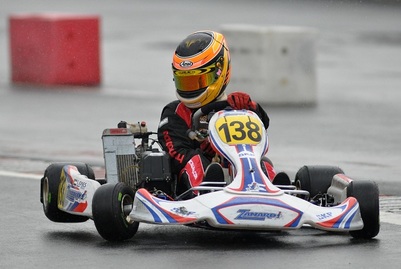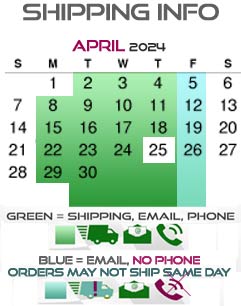GUIDE - Choosing the right 4-Stroke engine
GUIDE - Choosing the right 4-Stroke engine

Engines - they are typically the first thing you think of when you embark on a powered project, and commonly the most incorrectly chosen for the purpose.
"All I need is the biggest engine I can buy for my money, right?"
.jpg)
Not so! This is probably the most common mistake kart racers and DIY project builders make - buying an engine that seems like great value out of the box. Maybe a big-block stationary engine like a 13hp or perhaps even bigger. They offer big power, at a low price, but also big weight to go with it.
Power and engine size can go hand-in-hand, but with so many performance companies (primarily USA based) investing heavily into CNC and design producing plenty of billet upgrades for common stationary engines due to a flourishing karting competition base, it can often be cheaper to produce more power from a smaller engine. This provides the added benefit of weight reduction, which in turn makes you go faster - and allows you to turn - more on that later.
"Sure, I understand that weight might slow me down, but that's about all right? I mean, I get all this extra HP for my money so that will more than make up for it right?"
While the extra power can overcome the weight, nothing will overcome the handling issues that immediately arise with a heavy engine in a race kart. These issues do not apply to vehicles running a differential, but if you're running a live rear axle, a heavy engine offset to one side - or even a heavier vehicle in total, will product handling issues in one or both directions.
"What happens to my kart's handling characteristics with a heavy engine, and why?"
We're glad you asked. The problem comes about because when a vehicle turns, the inside wheels must travel at a lower speed than the outside wheels. This is because the outside of the vehicle travels a longer distance compared with the inside.
When you drive your car, you have a differential in the axle which allows the outside wheel to spin at a different rate compared with the inside wheel.

With a racing go kart (or any other kart with a fixed straight live rear axle), the axle shaft is fixed, and the inside wheel and outside wheel must always travel at the same speed. This means that the kart will always want to push forward rather than turn.
Thankfully, some clever fellow came up with an ingenious way of allowing the inside wheel to travel less distance while still rotating at the same speed - they simply lifted it off the ground! This is done by using the front wheel on the inside to push down onto the ground during a turn, forcing the inside of the kart to lift up off the ground and allow the inside wheel to rotate without touching the ground - thereby ensuring that the kart can turn effectively. You can learn more about how this is achieved in our STACP project stub axle install guide here: https://cutpriceracing.com.au/store/Page77/

The heavier the kart though, the harder it is to lift it from the ground, and therefore the more compromised the turning ability. When the weight is evenly distributed across the lateral plane (side-to-side) the handling characteristics are neutral and the effect on the handling will be the same in both turning directions. Karts are generally designed to do this by offsetting the driver (you'll notice on your race kart that your seat isn't in the middle of the kart, and you kind-of sit skewwhiff or diagonally. This also affords room for the engine.
Because the kart is carefully designed to distribute the weight with a certain amount of engine weight, when we modify this area we also cause the weight distribution to change. A heavier engine will cause more weight to be distributed over the right side of the kart (engine side) and makes it harder to lift that side wheel. That means that when turning right, the kart will plough straight instead noticeably instead of turning. The heavier the engine, the more unresponsive the kart will be turning right.
"Ok, I don't really mind if I can't turn right and I've already got my engine, so can I buy a clutch for this engine please?"
Clutches are where things are elevated to a new level of headache with a big block. Generally speaking every engine bigger than 200/210cc will be using a 1" shaft, rather than a 3/4" (19.05mm) shaft common on the 200cc engine range. The big problem with 1" shafts is that they are not very well supported for clutches. With a 1" shaft basically have 3 options:
Option 1 - Basic 1" centrifugal clutch (like our SR series clutch) - available for about $55 - an example can be found here:
Option 2 - Torque converter (up to 16hp) - with a remote driven pulley/jackshaft system which is around $350 and can be found here:
Option 3 - Race clutch capable of 20+ hp - around $700 - an example can be found here:
As you can see, with a 1" shaft, the range of clutches is extremely small - mainly because there is not enough market for the price required to cover the manufacturing costs with a customer base quite small in comparison to the extremely popular 200cc karting formula in the USA. So if you want to improve your big block engine, be prepared to spend a small fortune on a clutch. By comparison, a 200cc clutch offering 20+ HP capability can be found for half the price of the 1" model, and depending on the use you can get into one for just over $100!
"I don't care that the clutches are expensive, I'm going to buy heaps of upgrade parts and bomb this thing out anyway - can I buy billet upgrade parts for the big block engines?"
Ok, so you don't mind the handling characteristics of the heavy engine, or the cost of the clutches - great, in that case it's possible choosing a big block engine may work out ok. But if you want to upgrade it internally, it's going to be very expensive. In a lot of cases parts are simply not available, but when they are - much the same as the clutch issue - they are produced in smaller quantities. Generally speaking the cost of any component for a 9hp+ engine is going to be 2-3 times the price of a similar 200cc component. For example an aluminium flywheel for a gx200 starts at just over $100 - whereas one to suit a 13hp engine is going to set you back around $400. The reason this is the case is the same as the clutch issue - because the big block motors aren't as popular, parts are produced in smaller quantities and the economy of scale is lower - so they cost more. Plus they must often deal with larger forces - the force of the combustion in the chamber in a big capacity motor requires stronger pistons, conrods, crankshafts needing more material which in turn produces more torque at a lower RPM which is tougher on clutches.
"I think, based on what I've discovered, that I might be better off going with a 200cc engine - you seem to have lots of them - which one is the best one for me?"
That's a great question - one that we wrote this easy-to-understand guide to cover.
When looking at a 200cc engine, there is so much choice in the market. Quality varies wildly from a cheap $50 engine, to a $500+ engine which are both advertised to achieve the same thing. Sometimes, a $50 engine can be sufficient - especially if there is absolutely no intention of upgrading it in the future but they are never going to be as reliable as a $500 one - and in some cases they will damage themselves and/or the accessories attached to them.
*Things to look out for on a cheap engine**
-
A critical thing to look out for on a really cheap eBay special GX200 type engine is the carburettor. On cheap engines the carb tends to be of lower quality and often they will idle higher to achieve a steady idle. This can partially engage clutches which can mean you'll destroy a clutch quite quickly. A good quality carb can be installed that will solve these issues for about $45 - you can get one here:
- The second, more important issue, is the quality of the componentry inside. If you are planning on increasing the power output of the engine it can be perilous due to poor manufacture of things like cam gears (which will be plastic) and poorly balanced crankshafts which introduce excessive vibration leading to damaged seals, bearings, con-rods and more. As a rule the crank-cases of cheaper engines are thinner and casted with less care, resulting in cracks or covers working loose which can dump oil mid-use and seize the engine. If you're planning on upgrading, buy a good quality engine to start with so that your time and money isn't wasted. All CPR engines are designed to be upgraded to race engines, so they are super reliable in stock form and can accommodate high horsepower outputs when upgraded correctly.
When choosing a 200cc engine, it's important to determine what it's going to be used for, and whether it's going to be upgraded in the future. It's common to get an engine, get used to the power, and then want more soon after - for this reason it's always a good idea not to write-off upgrading in the future - the chances are that you'll want to go faster in time!
There are generally 6 main types of uses for karts/project vehicles which we'll categorise into the following areas to keep thing simple:
-
Recreation - Off Road
If you're going to be using your vehicle in a backyard/paddock or trails and the beach then you'll fall into this category, unless you're considering a dual purpose vehicle.
-
Recreation - Circuit
Got a bunch of mates together and built a track in someone's backyard? Or are you going to take your kart to a rental track or test-n-tune days at an independent kart club and have no aspirations of racing in a sanctioned club with rules covering engine specifications? You'll probably fit into this usage type.
-
Race - Speedway 4-Stroke
There are tons of local independent clubs running speedway - if you're keen to get involved you'll fall into this category.
-
Race - Dirt or Bitumen Independent Club
Have you found a 4-stroke club you'd like to race at and need an engine to compete? If you're gearing up to compete you will fall into this category unless you are looking to run in KA 4SS category in which case you'll need to see #5.
-
Race - Bitumen KA
Decided the new KA 4SS class is right for you? Then this is the category you'll fit into.
When choosing an engine, if you fall into more than one of the usage types above then choose one to suit the highest number category. The engine you buy will work for the categories with a lower number (although they may not be the best option for those categories but if you are only buying one engine it's always a compromise). Below, we'll outline which are the best engines for your chosen purpose.
-
Recreation - Off Road
If you fall into this usage category you can pretty much choose any engine and clutch combo and it will work. Some better than others, but ultimately you can solve your issue on a budget, or you can throw more cash at it and have even more fun.
If you're going to run normal kart slicks you can generally get away with a 6.5hp engine with a dry clutch like our SR models, and a 5.5:1 ratio (something like a 12T front and a 65T rear sprocket). This won't have a lot of top speed but it will accelerate acceptably and offer a limited ability to navigate terrain. You can increase your top speed by using one of the ungoverned 200cc 10hp style engines.
Typically off road vehicles will use larger wheels to offer more ground clearance. Large wheels make the gearing taller and will mean that a dry clutch is not practical - in this case you're best to consider the 6.5hp with a torque converter. A torque converter multiplies the ratio by 2.7:1 at launch, which solves ratio issues and provides the driver with a huge amount of acceleration/torque at take-off - perfect for traversing hills or getting through difficult terrain at low speed. Torque converters also provide better low-speed use, as running a dry clutch at low speed (for example when kids are learning to drive the vehicle) will cause it to overheat and fail. (You can learn more about torque converters and dry clutches here: https://cutpriceracing.com.au/store/Page59/) An even better solution is the 200cc 10hp model with the uprated torque converter. This will provide maximum acceleration from the launch with unbeatable performance in difficult terrain - getting out of bogs and over obstacles.
Good - CPR 200cc 6.5hp with standard dry clutch
Better -CPR 200cc 6.5hp + Torque Converter
Best - CPR 200cc 10hp + Torque Converter
AND
-
Recreation - Circuit
For non-competitive circuit racing we recommend using a dry clutch for maximum reliability. When pushed hard during racing it can be easy to over-stress the belt on a torque converter so it may prove a little unreliable in this usage situation.
If you are going to leave the engine completely stock, our entry level CPR 200cc 10hp engine is a great solution. The power output and RPM range is a limited, and if you decide you want to upgrade to get more power out of it you will absolutely need to install a billet connecting rod and an aluminum flywheel. If you don't fancy mucking about inside your engine, choose from our race-built 200cc CPR 10hp engines which have this already completed by a qualified engine technician so that you can concentrate on power increases. The race engines come with a minimum of 26lb valve springs to ensure you get maximum RPM and maximum power at each level.
You can operate the engines with standard SR style clutches, but we recommend the CPR GT clutch for the best result, maximum adjustability and ease of service (the SR model is non-user servicable). More expensive competition clutches are also available, but at this level the CPR GT clutch is as much as you will likely ever want or need. You can even opt for a higher power output race engine if you want to scare yourself/wife/friends/kids or wear your rear tyres out and have maximum fun!
Good - CPR 200cc 10hp + SR Clutch
Better - CPR 200cc 10hp Stage 1 Race Engine with SR Clutch
Best - CPR 200cc 10hp Stage 1 Race Engine with GT Clutch
Power Monster - CPR 200cc 14-16hp Stage 2 Race engine with SR or GT Clutch
-
Race - Speedway 4-Stroke
When running speedway, you will find that your engine is going to be operating at the top of it's rev-range fairly regularly. This puts a lot of pressure on the connecting rod. It requires good lubrication and/or bearing to operate continuously at this level. You will absolutely require a billet con-rod and aluminium flywheel for this work. You can learn more about the failure of stock con-rods in engines being used for speedway work in our guide here: https://cutpriceracing.com.au/store/GUIDE-Why-stock-conrods-fail/
For speedway, choose from our race-built 200cc CPR 10hp engines which have this already completed by a qualified engine technician so that you can concentrate on power increases. The race engines come with a minimum of 26lb valve springs to ensure you get maximum RPM and maximum power at each level.
You can operate the engines with standard SR style clutches, but we recommend the CPR GT clutch for the best result, maximum adjustability and ease of service (the SR model is non-user servicable). More expensive competition clutches are also available, but at this level the CPR GT clutch is as much as you will likely ever want or need. You can even opt for a higher power output race engine if you want to scare yourself/wife/friends/kids or wear your rear tyres out and have maximum fun!
Good - CPR 200cc 10hp Stage 1 Race Engine with SR Clutch
Better - CPR 200cc 10hp Stage 1 Race Engine with GT Clutch
Best - CPR 200cc 14-16hp Stage 2 Race engine with SR or GT Clutch
-
Race - Dirt or Bitumen Independent Club
Just like running speedway, you will find that your engine is going to be operating at the top of it's rev-range fairly regularly. This puts a lot of pressure on the connecting rod. It requires good lubrication and/or bearing to operate continuously at this level. You will absolutely require a billet con-rod and aluminium flywheel for this work. You can learn more about the failure of stock con-rods in engines being used for speedway work in our guide here: https://cutpriceracing.com.au/store/GUIDE-Why-stock-conrods-fail/
*For independent clubs, first determine the engine specifications eligible for each class - in most cases for most clubs our Stage 1 Race Engine will be legal. A lot of clubs allow further modification for open-style classes. If you're unsure, obtain a copy of the engine rules and contact CPR to advise you of what engines are available for immediate dispatch that comply with the club rules. Choose from our race-built 200cc CPR 10hp engines which have this already completed by a qualified engine technician so that you can concentrate on power increases. The race engines come with a minimum of 26lb valve springs to ensure you get maximum RPM and maximum power at each level.
You can operate the engines with standard SR style clutches, but we recommend the CPR GT clutch for the best result, maximum adjustability and ease of service (the SR model is non-user servicable). More expensive competition clutches are also available, but at this level the CPR GT clutch is as much as you will likely ever want or need. You can even opt for a higher power output race engine if you want to scare yourself/wife/friends/kids or wear your rear tyres out and have maximum fun!
*Good - CPR 200cc 10hp Stage 1 Race Engine with SR Clutch
*Better - CPR 200cc 10hp Stage 1 Race Engine with GT Clutch
*Best - CPR 200cc 14-16hp Stage 2 Race engine with SR or GT Clutch
*note - the engines above may not be class legal for some independent clubs, you will need to check the rules and regulations to ensure CPR performance race engines meet the criteria set out by the club. You can also obtain a copy of the engine rules and contact CPR to help determine which engine is suitable/best. The engines list above is a guideline for most independent 4-stroke based clubs.
-
Race - Bitumen KA
The new KA 4SS class offers a unique solution to low-cost, 4-stroke reliability and access to the large network of KA sanctioned tracks around Australia. Due to the homologation of only a couple of engine makes and models, CPR performance race legal engines are not eligible to compete. You will require a purpose built Torini Clubmaxx engine for these classes which can be purchased with free delivery and same day dispatch here:
*Best - Torini Clubmaxx 4SS Pack

























